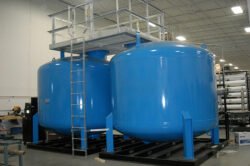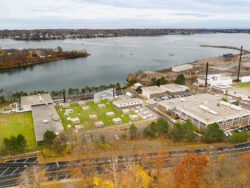Plum Island Wastewater Treatment Plant
The Plum Island Wastewater Treatment Plant: A Comprehensive Overview
The Plum Island Wastewater Treatment Plant, located in Charleston, South Carolina, is an essential infrastructure facility that serves the region by treating wastewater and protecting the local environment from contamination. In this comprehensive overview, we will explore the historical context, technical processes, environmental impact, and challenges faced by the plant. This article aims to provide a detailed understanding of the operations, significance, and future prospects of the Plum Island Wastewater Treatment Plant.
Historical Context
Early Development
The need for effective wastewater management in Charleston became apparent as the city grew during the early 20th century. The population boom and industrial expansion put significant strain on the existing sanitary infrastructure, which relied on outdated and inefficient septic systems. Public health concerns, such as waterborne diseases, and environmental degradation prompted local authorities to consider a centralized wastewater treatment facility.
Establishment
The Plum Island Wastewater Treatment Plant was conceived in the 1960s and became operational in 1975. It was seen as a critical development in Charleston’s efforts to modernize infrastructure and manage wastewater more effectively. Located on Plum Island, the plant was strategically positioned to serve the metropolitan area and benefit from proximity to the harbor for discharge of treated effluent.
Technical Processes
Preliminary Treatment
Upon entering the plant, wastewater undergoes preliminary treatment to remove large debris and solids. This stage involves screening and grit removal. Bar screens trap large objects such as sticks, rags, and plastics, preventing them from damaging downstream equipment. Grit chambers then allow sand, gravel, and other heavier materials to settle out.
Primary Treatment
Following preliminary treatment, the wastewater enters primary clarifiers where the pretreatment process continues. Here, suspended solids settle to the bottom as sludge, and lighter materials like oil and grease rise to the surface. The sludge is scraped from the bottom, and skimmers remove the scum from the top. This stage significantly reduces the organic load and prepares the sewage for secondary treatment.
Secondary Treatment
Secondary treatment involves biological processes that further degrade and remove organic matter. The Plum Island facility utilizes an activated sludge process where microorganisms in aeration tanks break down organic pollutants. Aeration provides oxygen, essential for the aerobic bacteria to thrive and perform biodegradation. The treated water then moves to secondary clarifiers where the microbial biomass, or activated sludge, settles out. Some of this sludge is recirculated to maintain the microbial population in the aeration tanks.
Tertiary Treatment and Disinfection
To meet stringent discharge standards, the Plum Island plant employs tertiary treatment methods. These methods include filtration and advanced oxidation processes. The effluent is then disinfected using ultraviolet (UV) light or chlorine to eliminate pathogens, ensuring the safety of the water released into the environment.
Sludge Treatment
The plant also handles the treatment and disposal of sludge generated during the process. This involves thickening, stabilization, and dewatering. The stabilized sludge, or biosolids, can be safely disposed of or recycled for agricultural use, depending on regulatory compliance and pollutant concentrations.
Environmental Impact
Water Quality Improvement
One of the primary benefits of the Plum Island Wastewater Treatment Plant is the substantial improvement in water quality within the Charleston area. The facility’s comprehensive treatment processes ensure that harmful pollutants are removed from the sewage before it is discharged. This helps to protect aquatic ecosystems and maintain the health of local waterways.
Ecosystem Protection
The plant’s operations play a crucial role in protecting marine and estuarine ecosystems. By effectively removing nutrients such as nitrogen and phosphorus, the facility prevents eutrophication, a condition where excess nutrients cause harmful algal blooms. These blooms can deplete oxygen levels in the water, causing fish kills and other adverse effects on aquatic life.
Public Health Safeguard
The treatment of wastewater is essential for safeguarding public health. The removal of pathogens, heavy metals, and other hazardous substances reduces the risk of waterborne diseases. The Plum Island Wastewater Treatment Plant ensures that the effluent released into Charleston Harbor and nearby water bodies is safe for recreational use and compliant with regulatory standards.
Challenges and Innovations
Aging Infrastructure
One of the significant challenges facing the Plum Island Wastewater Treatment Plant is aging infrastructure. Many components of the facility are several decades old and require regular maintenance or upgrades to ensure continued reliable operation. Corrosion, wear and tear, and obsolescence of equipment can impact the plant’s efficiency and overall performance.
Population Growth
Charleston’s population growth places additional demands on the wastewater treatment system. As more residents and businesses connect to the sewer network, the plant must handle higher volumes of wastewater. This necessitates upgrading capacity and improving processes to manage the increased load without compromising treatment quality.
Climate Change
Climate change poses several risks to wastewater treatment facilities, including the Plum Island plant. Rising sea levels and increased frequency of severe weather events such as hurricanes and heavy rainfall can lead to flooding and infrastructure damage. The plant must implement adaptive measures to mitigate these risks and ensure resilience in the face of climate-driven challenges.
Technological Advances
Advancements in wastewater treatment technology offer opportunities for the Plum Island plant to enhance its operations. Innovations such as membrane bioreactors, advanced nutrient removal, and energy-efficient treatment methods can improve treatment efficacy and sustainability. The integration of smart technologies and automation can optimize process control and reduce operational costs.
Regulatory Compliance
Environmental regulations are continually evolving, requiring wastewater treatment plants to adapt and comply with stricter standards. The Plum Island Wastewater Treatment Plant must stay abreast of regulatory changes at the federal, state, and local levels. This includes adhering to the Clean Water Act, National Pollutant Discharge Elimination System (NPDES) permits, and emerging contaminant guidelines.
Community Engagement and Education
Public Awareness
Public awareness and education about the importance of wastewater treatment are vital for community support and environmental stewardship. The Plum Island Wastewater Treatment Plant actively engages with the local community through outreach programs, tours, and educational initiatives. These efforts aim to inform residents about the treatment process, the facility’s role, and best practices for reducing household pollution.
Collaborative Efforts
Collaboration with environmental organizations, universities, and governmental agencies is essential to address the diverse challenges facing wastewater management. The Plum Island plant participates in research projects, policy development, and sustainability initiatives that promote innovative solutions and shared best practices within the industry.
Volunteer Opportunities
Volunteering opportunities are available for community members to get involved in environmental cleanup efforts, monitoring water quality, and supporting plant operations. Such involvement fosters a sense of ownership and responsibility towards local water resources, encouraging residents to adopt environmentally friendly habits in their daily lives.
Future Prospects
Infrastructure Investment
To ensure long-term reliability and efficiency, significant investment in infrastructure upgrades is essential. Replacing aging equipment, expanding capacity, and enhancing treatment technology will enable the Plum Island Wastewater Treatment Plant to meet future demands and regulatory requirements. Funding from federal, state, and local sources, along with public-private partnerships, can support these initiatives.
Sustainability Initiatives
Sustainability is a critical focus for the future of wastewater treatment. The Plum Island plant is exploring renewable energy sources, such as biogas from anaerobic digestion of sludge, to reduce reliance on fossil fuels. Implementing water reuse and recycling programs can alleviate pressure on freshwater resources and promote conservation.
Resilience Planning
Given the increasing threats posed by climate change, resilience planning is paramount. The plant must develop and implement strategies to cope with extreme weather conditions, sea-level rise, and other climate-related impacts. This includes infrastructure fortification, emergency response plans, and adaptive management approaches.
Innovation and Research
Continued investment in research and development will drive technological advancements in wastewater treatment. The plant can collaborate with academic institutions, research centers, and industry partners to pilot new technologies and processes. Innovation in areas such as advanced oxidation, nutrient recovery, and microbial treatment holds promise for enhancing treatment efficacy and sustainability.
Policy Advocacy
Active participation in policy advocacy ensures that the needs and challenges of wastewater treatment facilities are represented in legislative and regulatory decisions. By working alongside industry associations and policy makers, the Plum Island Wastewater Treatment Plant can influence the development of supportive policies, funding opportunities, and regulatory frameworks that facilitate effective wastewater management.
Conclusion
The Plum Island Wastewater Treatment Plant is a vital component of Charleston’s infrastructure, playing a critical role in managing wastewater, protecting the environment, and safeguarding public health. Through its comprehensive treatment processes, the plant improves water quality, protects ecosystems, and supports the community’s well-being. While facing challenges such as aging infrastructure, population growth, and climate change, the facility continues to innovate and adapt to ensure sustainable operations.
Investment in infrastructure upgrades, sustainability initiatives, resilience planning, and research will enable the Plum Island plant to meet future demands and regulatory requirements. Community engagement, public awareness, and collaborative efforts further strengthen the plant’s ability to serve Charleston effectively. The Plum Island Wastewater Treatment Plant exemplifies the importance of advanced wastewater management in fostering a healthy, sustainable, and resilient urban environment.



